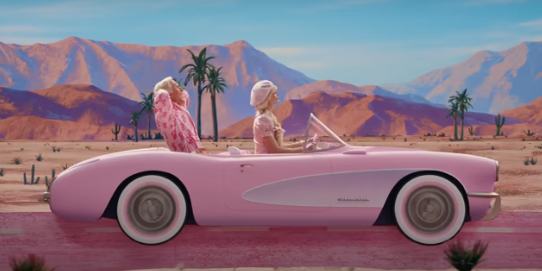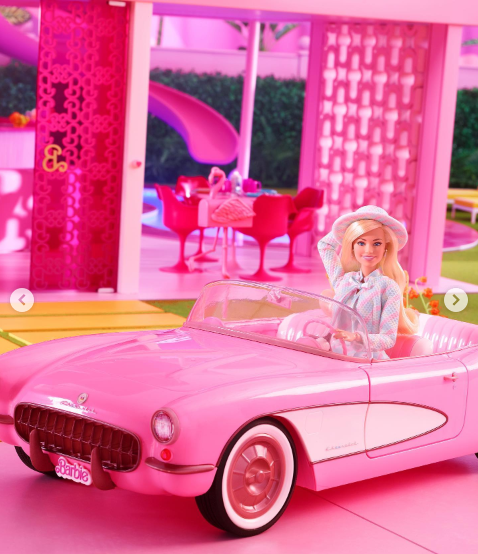Sadly, Pink Corvette Is Just a Bit Player in the Big, Bright Barbie Movie

“Why am I seeing a review of Barbie in my beloved Autoweek?” you demand. “I want to read about AJ Foyt, Don ‘Big Daddy’ Garlits, and carburetors.”
It’s here because there’s a Corvette in the movie! In fact, all the Barbies in Barbieland own and drive Corvettes. And who deosn’t love Corvettes? These are somewhat stylized, completely modified, shortened C1 Corvettes with back seats. And Barbie’s Corvette serves as the vehicle in which she escapes Barbieland to go out in the real world.
But is the presence of a small fleet of what may be 1958 Corvette-inspired movie cars enough to warrant plunking down $16 to go see the nearly two-hour movie when it opens worldwide on Friday, July 21? Not just for the Corvettes, no.

Using Hollywood insider connections, I got to see the entire movie last night, and I kept you, the reader, in mind the whole time. And frankly speaking, while you will almost certainly get a kick out of the Corvettes, especially when Margot Robbie barrel rolls one of them, it’s entirely possible you would not like the movie as a whole. But that’s just based on armchair psychographics of reader comments for numerous other stories. Judging by those, you guys love: Corvettes, whatever car you had in high school, whatever car you own now, all three generations of Earnhardts, everything Tony Stewart does, and the complexities of the Ford nine-inch rear end. Some of the movie’s themes might exceed the parameters of those subjects. So go see Mission Impossible: Tax Audit instead. Because most of the second half of the movie has to do with issues that may grate on your various sensitivities.
If you’re still reading, then you at least want to find out what those sensitivities are. I did. In addition to the Vettes, I was drawn to the movie by the very entertaining trailers that make it look like an existentialist sendup of a beloved child’s toy aimed at girls as seen through modern feminist ideologies. Take this perfect doll and plunk her into a modern reality she has never encountered, make her human, with human feelings and human complexities, instead of just being 11-and-a-half-inches of plastic perfection.
It starts out like the fun world we see in the trailers: Every day in Barbieland is perfect, every Barbie is perfect, every Barbie friendship is perfect. Then, real human thoughts intrude on Barbieland. She thinks about death, cellulite, and why she has to wear high heels all the time. Which sends her on a journey of self-discovery. She goes to the real world, with decidedly imperfect humans and where no day is exactly like the other, as it was in Barbieland. Ken tags along, learns the word “patriarchy,” and starts to see that he doesn’t have to be just a boy toy anymore. Everyone is liberated!
Audience reactions to the movie’s existential scenes will likely be drawn along gender lines. When the Mattel employee played by America Ferrera is describing the difficulties thrust upon women by Barbie’s perfection, many in the audience cheered—there was one, “You go girl!” But others might be less enthusiastic about this teaching moment. The plot goes from the fun, happy Barbieland of the movie trailers into an inside view of the role gender inflicts on half the population.
Or is that a vast oversimplification? Maybe you should go see it. Tell us what you thought of it in the comments below. There’s a lot more going on here than just the Corvettes. But the Corvettes are cool.

 Yahoo Autos
Yahoo Autos 